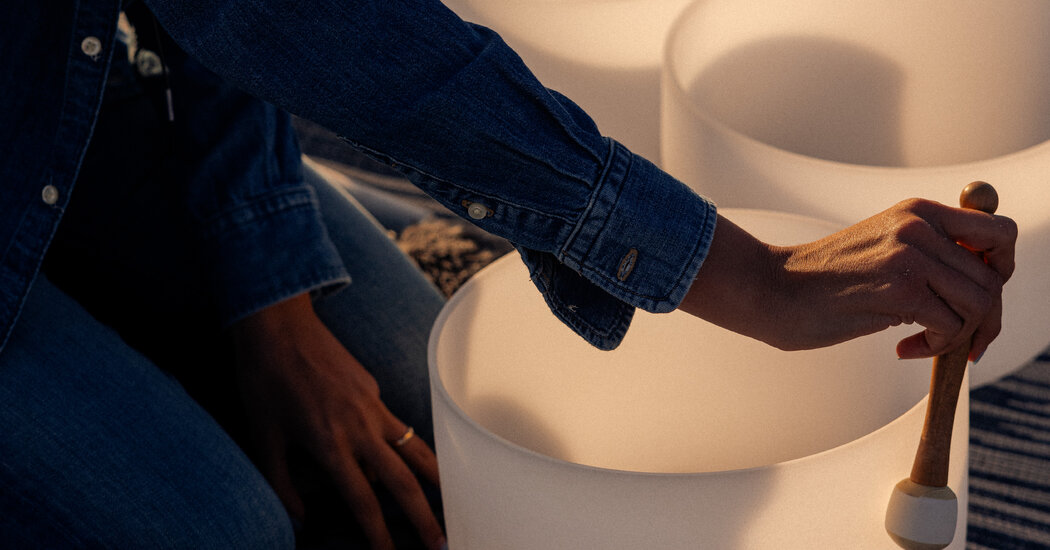We asked experts about the health benefits of listening to gongs, chimes and crystal bowls.
As the sun set over the Pacific Ocean, the beach cool against my back, a voice invited me to scan my body for feelings of powerlessness. “Then breathe in that area to help it release,” said Sara Sofia Bousiali, the leader of the evening’s sound bath.
Along with 21 other participants lying on the sand in Santa Monica this April, I listened as Ms. Bousiali played crystal singing bowls and chimes and guided us in an hourlong meditation. At the sound baths I’ve attended, the bell-like sounds seemed to fill my body and melt away racing thoughts. I lost track of time.
Therapeutic sound “baths” have been around for a few decades, said Jamie Bechtold, the co-founder and owner of a sound bath studio in Los Angeles. But she has seen their popularity grow in the last five years, she said, and lately they’ve spread beyond wellness hot spots like Southern California. They’ve popped up across the U.S., offered in a yoga studio in Cleveland and a barn outside of Raleigh, at corporate events and even onstage at Coachella.
What is a sound bath?
During a sound bath, participants are immersed in tones and vibrations from instruments like gongs, chimes, bells and singing bowls. Some instructors also add guided meditations or wellness rituals like Reiki energy healing.
The name stems from the idea of waves of sound washing over people, said Tamara Goldsby, a research psychologist at the University of California San Diego who has studied sound baths. While sound baths draw inspiration and use instruments from various spiritual traditions, they’re part of modern wellness culture.
